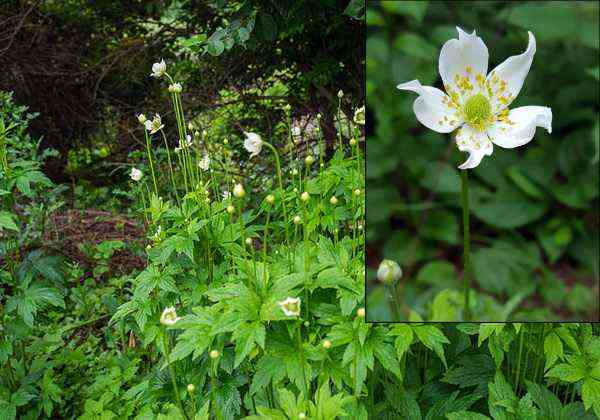Thimbleweed Care, Propagation, Toxicity
Photo:
Krzysztof Ziarnek, Kenraiz, CC BY-SA 4.0, via Wikimedia Commons
Thimbleweed is an excellent spring flower for the shaded or woodland garden, with flowers from summer to early fall. It is a good choice for naturalized areas or native wildflower gardens. It is not an aggressive species.
Anemone virginiana Description
A few fine, short, soft hairs grow on the plant. It has a ramified stem that grows 60 to 100 cm tall above the small leaves that grow around the flower (involucre). The stalks of the basal leaves are long. They are divided into three sections, which are further subdivided.
Quick Growing Guide
Botanical Name: Anemone virginiana
Also Called: Tall Anemone
En français: Anémone de Virginie
Colour:
Blooms:
Sun / Shade:
Height:
- The flower stalks range in length from 15 to 30 cm.
- The flowers are greenish-white in colour.
- Its ovate or cylindrical fruit measures more than 1 cm in diameter.

Caring for Thimbleweed
Anemone virginiana is easily grown in average, dry to medium, well-drained, sandy-humusy soil. Though it prefers in full sun to part shade, it tolerates full shade. It is not as aggressive as most other anemone species.
You can propagate thimbleweed by seeds sown in fall or early spring. Or, divide older established plants.
Meadows, borders, and fence lines are its natural habitat. Ferns, False Solomon’s seal, may apple, yellow wood poppy, amsonia, asters, and sedges are all good companion plants.
Toxicity
This wild plant is spurned by animals due to its blistering sap. Even deer will avoid browsing the plant because all parts have a chemical which causes pain, blisters and irritation of the mouth that can develop into vomiting and diarrhea if ingested.
When consumed in large quantities, all parts of this plant are toxic. This plant is expectorant, astringent, and emetic. A decoction of its roots was used by indigeneous nations to treat coughs, tuberculosis, and diarrhoea.







Leave a Reply
You must be logged in to post a comment.